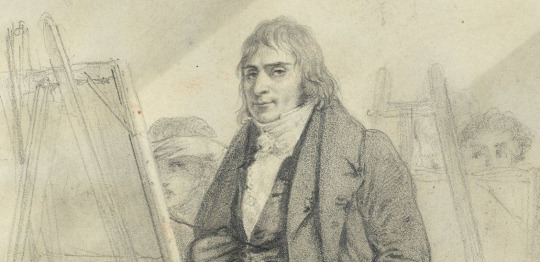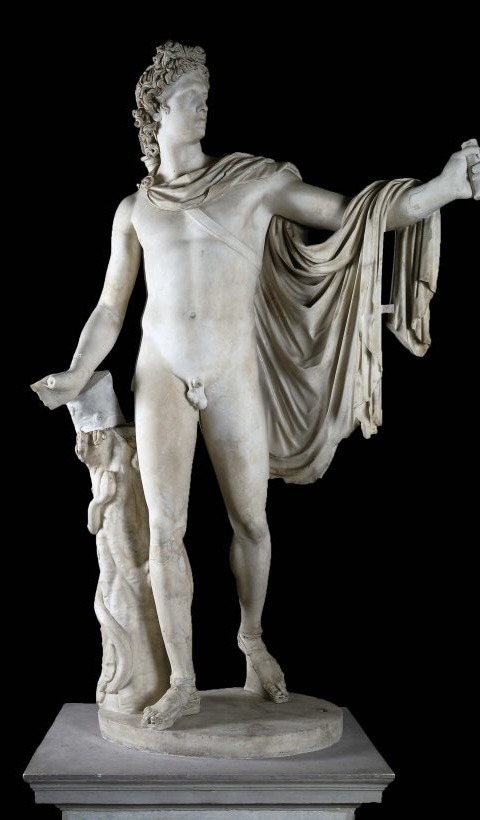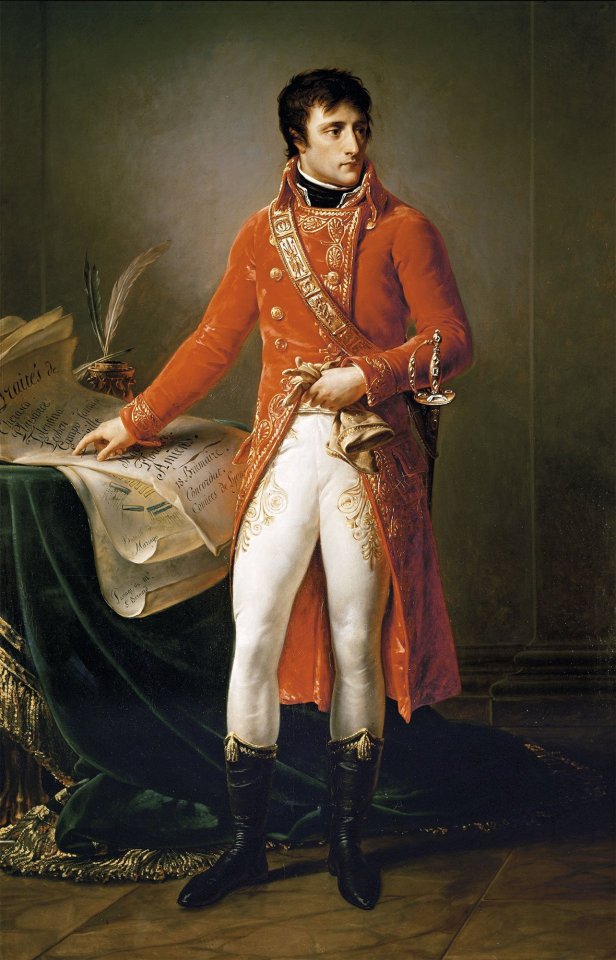#Antoine Gros
Explore tagged Tumblr posts
Text
Hortense about "Les Pestiférés de Jaffa"
This is an add-on to this post, in particular to the wonderful answer by @orsuliya about Gros being angry at Bessières and depicting him in this embarrassing way as a way of revenge. I wanted to reblog at first but this translation did get kind of long, so I thought I'd better put it in its own post. Here is what Hortense has to say in her memoirs about that very same painting, and in particular about her brother’s reaction to it. - However, I believe Hortense places this scene somewhat earlier, during the Consulate, even early in the Consulate, a rather short time after the battle of Marengo and after Gros had returned from Italy to Paris (which happened somewhen in 1801?).
As I had often heard [Napoleon] and those who had accompanied him talk about his visit to the plague-stricken people of Jaffa, I thought there would be a fine picture to paint on this subject. Gros, who had just arrived from Italy, was in the Tuileries one morning. I told him about my idea. He approved it and painted a picture that has remained one of his masterpieces. It was exhibited at the Salon.
At which point editor Hanoteau adds a footnote about the painting:
Gros, who had just completed a mission to Italy to select the works of art granted to us by the peace treaty, exhibited the Pestiférés de Jaffa at the Salon of 1804. This painting is now in the Louvre. The sketch is in the Château de Chantilly.
(I wish Hanoteau had also talked about the probability of Hortense - of all people - having given the idea to this painting. In my opinion, it's much more likely that the painting was officially commissioned, and that Hortense is only drawing all attention to herself, as usual.)
But here comes Eugène:
My brother arrived one morning, highly irritated with the painter who had depicted the general's aides-de-camp following him and holding their handkerchiefs to their mouths. "No one better than I," he told me, "can know how this visit went, since I was there, along with the general's other aides-de-camp. We were certainly not at our ease, but would we have had so little control over ourselves as to show any fear when the general, in order to reassure the army, showed such courage and exposed himself so much?" I had great difficulty in persuading my brother that painting was necessarily an imperfect language, that it could only express an idea in a certain way, and that, in order to convey the courageous action of the main character, it had been necessary to indicate a different feeling in the others and, consequently, to sacrifice them. All the First Consul's aides-de-camp shared my brother's indignation against the painter and I had great difficulty in bringing them back to the necessities of art.
Eugène: We didn't do that!
Hortense: [improvises a 15-minute speech about the goals and limitations of art and the artist's obligation to sometimes tell a small lie in order to convey a greater truth]
Eugène: Yeah, but we still didn't do it!
If Eugène really was that angry, my first thought would have been that the guy behind Napoleon was him - but that guy clearly does not look anything like him at all. But interestingly, Hortense claims that Napoleon's aides in Egypt (of which Bessières was not one) felt that they were shown in this offensive way.
So, if the person Gros had depicted really was supposed to be Bessières - did they not recognize him either without his powdered hair? Just like us? 😋
#napoleon's marshals#jean baptiste bessières#napoleon's family#hortense de beauharnais#eugene de beauharnais#antoine gros
16 notes
·
View notes
Text

Napoleon Bonaparte through Gros's Eyes - A Riveting Portrait Gallery by Antoine-Jean Gros
100+ Very High Resolution Art Pics
2 notes
·
View notes
Text


Portraits of Antoine-Jean Gros (details) by Jules Boilly, son of Léopold-Louis Boilly.
14 notes
·
View notes
Text
everyone shhh for a second and look at this ink doodle of diomedes and glaucus hugging by 18th century painter antoine-jean gros

#if anyone knows what original plaque/engraving it is from let me know#it's either from a roman intaglio or just 'a stone carving'?? louvre museum you're not being helpful#diomedes#glaucus#tagamemnon#antoine jean gros#the iliad
4K notes
·
View notes
Text
When your Character "Lacks Empathy"

A person who lacks empathy - has a difficult time taking on another person’s feelings as their own.
They may struggle with the cognitive and emotional skills to understand, relate, and mutually share in another person’s experience to better understand their emotional pain.
Types of Empathy
There are three common types of empathy that a person may lack:
Cognitive empathy: Also known as perspective-taking, cognitive empathy relies on the listener’s capacity to relate to another person’s perspective without imposing their own experience, point of view, or biases.
Compassionate empathy: A hybrid of cognitive and emotional empathy, compassionate empathy requires analyzing the underlying cause and effect of a situation. After someone explains their circumstances, you can demonstrate that you understand their situation on some level in an unbiased manner.
Emotional empathy: An emotionally empathetic person can mirror another’s struggles. This means they can care for another’s well-being through shared experience of emotional situations.
Signs of Lack of Empathy
While there are many different signs that a person lacks empathy, here are a few common traits that unempathetic people may display:
An inability to understand others: A person who lacks empathy may struggle to understand other people’s feelings, problems, or life situations.
Difficulty regulating emotions: Someone who lacks empathy often has a hard time understanding or regulating their own emotions.
Excessive criticism: Those who lack empathy may criticize others harshly and often. They rarely use validation to make others feel seen or heard.
Impatience: A person who lacks empathy may be extremely impatient with other people, their difficulties, and their emotions.
Minimal forgiveness: Those who lack empathy are often unwilling to forgive others for their mistakes or weaknesses or remember that other people are also human beings.
Poor listening skills: Many people who lack empathy have a hard time listening to other people, whether they’re sharing triumphs or struggles.
Self-centeredness: A person who lacks empathy is often self-centered or self-focused and has a difficult time considering other people.
Victim-blaming: Those who lack empathy are often quick to blame the victim in a situation, rather than considering the perpetrator or system.
Some Causes of a Lack of Empathy
There are many causes of an empathy deficit. They include but are not limited to:
A personality disorder: Some people who struggle to empathize with others may have a personality disorder that inhibits their ability to connect or communicate. Common personality disorders include narcissistic personality disorder (NPD or narcissism), antisocial personality disorder, and borderline personality disorder (or BPD).
Autism spectrum disorder: Individuals on the autism spectrum may experience different levels of empathy, interpersonal skills, and emotional intelligence.
Lack of awareness: Many people who lack empathy simply don’t realize it and therefore haven’t spent time and energy working to develop empathy. Self-awareness is a key step toward empathy.
Lack of role models: Many people who are unempathetic have not had strong role models for empathetic behavior in their lives—or have had many models of unempathetic behavior instead.
Impact of Lack of Empathy
Empathy is a foundational component to feeling compassion for others, building trust with others, and helping loved ones through hard times.
Without a sense of empathy, a person will struggle to care about anyone other than themselves, and may find it difficult to care about helping or listening to others.
This lack of empathy can severely affect their ability to maintain healthy relationships with others or effect positive change in their community.
Addressing a Lack of Empathy
If you find that someone you know—whether a family member or a coworker—is struggling to be an empathetic person, here are a few techniques you can use to help encourage their sense of empathy:
Address it directly. Many people who lack empathy are simply unaware of themselves or the struggles around them. While it may be hard, consider sitting down one-on-one with the people in your life who lack empathy and talk candidly about the situation. Be patient, kind, and empathetic in your conversation—even if they’re upset, the honest realization that they struggle to experience empathy is the first step toward actively developing the skill.
Model empathic behavior. One of the strongest ways for a person to develop empathy and emotional connections with others is to surround themselves with good role models of empathetic behavior. To help someone who struggles to be empathetic, display empathy in your conversations with them and in your interactions with others, being kind and generous to show them what it looks like.
Practice identifying emotions. Many people who lack empathy struggle to understand others’ emotions and where they come from. They may interpret someone who’s scared as being angry or someone who’s hurt as being aggressive. To help develop their ability to understand others’ emotions, practice identifying emotional reactions in others and discussing potential causes. For example, if a friend is having a hard time, talk through it with the person to identify how that friend might be feeling and why. You can also consider discussing ways in which you both could help.
Recommend professional help. Some people may lack empathy due to a mental health difficulty or major stressor in their life. Consider recommending a visit to a mental health professional or empathy coach to help them get their life back on track and make more room for empathy in their interactions with others.
Source ⚜ More: Notes & References ⚜ Writing Resources PDFs
#empathy#character development#writing notes#writeblr#literature#writing inspiration#character building#writing ideas#light academia#writers on tumblr#writing reference#spilled ink#dark academia#writing prompt#creative writing#antoine-jean gros#writing resources
209 notes
·
View notes
Text




SAPPHO AT LEUCATE /1801/ by ANTOINE-JEAN GROS
Sappho was an ancient Greek lyric poetess from the island of Lesbos, very famous for her personal poetry of love and desire. This painting is centred on the myth where she is intent on leaping from a cliff into the sea at Leucate. This is because she had great love for the boatman Phaon, who didn't feel the same.
Gros's portrayal has Sappho illuminated by the moonlight, with her eyes closed, and arms tightly hugging the lyre against her body, it is almost as if she has just taken a deep inhale of air right before the jump. In the background, there seems to be a lit fire, which could be a sacrificial altar with its meaning rooted in the fact that the decision is final.
This painting was very well received after its creation, and Gros was really making a name for himself in the art world. All this is because he also created historic and Napoleonic artworks in the 1790s. Despite the success of this painting had Gros just couldn't replicate this achievement in his later works.
"Sappho at Leucate" marked a peak at the artist's career, but with it came constant depression and the anxiety of searching for a new masterpiece. Gros was eyeing a position of master of French school that was vacant due to the banishment of his teacher Jacques-Louis David. Unfortunately, he never got it.
161 notes
·
View notes
Text

The Death of Sappho by Antoine-Jean Gros
#antoine jean gros#art#sappho#ancient greek#ancient greece#history#classical antiquity#europe#european#lyre#poet#poetry#lefkada#cliffs#love#death#ancient#mediterranean#poets#sea#moon#moonlight#moonlit#night#sky#clouds#flame#fire#cliff#poetess
137 notes
·
View notes
Text

Antoine-Jean Gros (French, 1771–1835) Bacchus and Ariadne, 1820
#Antoine-Jean Gros#French art#Bacchus and Ariadne#1820#1800s#art#fine art#european art#classical art#europe#european#fine arts#oil painting#europa#mediterranean#mythological art#greek mythology#mythology#myth#greece#roman mythology#rome#blonde#blond#bacchus#ariadne#painting
115 notes
·
View notes
Text

Portrait of the Maistre Sisters
Artist: Antoine-Jean Gros (French, 1771–1835)
Date: 1796
Medium: Oil on canvas
Collection: Art Institute of Chicago, Chicago, IL, United States
Description
In this captivating double portrait, the fashionable Maistre sisters appear in complementary flowing muslin gowns and delicate gold jewelry. Ninette, in black, wraps her arm delicately yet protectively around her sister Suzette’s waist as both look out toward the viewer. French painter Antoine-Jean Gros created the visual sensation of a gentle breeze by animating the sitters’ gauze-like draperies and chestnut curls. Dense foliage, at times blending in with the curls, frames the pair and opens onto a gleaming landscape background.
#painting#women#double portrait#sisters#oil on canvas#french art#artwork#oil painting#fine art#landscape#muslin gown#black gown#white gown#gold jewelry#tree#grassy field#mountains#foliage#french culture#antoine jean gros#french painter#18th century painting#art institute of chicago
22 notes
·
View notes
Text
Bonaparte Visits the Plague Victims of Jaffa (c. 1804)

Antoine-Jean Gros (b. 1771 – d. 1835)
20 notes
·
View notes
Text
Napoleon as Apollo Belvedere, god of plagues, by Antoine-Jean Gros


Napoleon (left), Apollo Belvedere (right)
#Antoine-Jean Gros#Gros#napoleon bonaparte#Bonaparte Visiting the Plague Victims of Jaffa#Bonaparte visitant les pestiférés de Jaffa#Apollo Belvedere#Napoleon#Apollo#Belvedere Apollo#napoleonic era#napoleonic#first french empire#french empire#19th century#history#art#art history#symbolism#history of art#classical#french revolution#neoclassical#Egypt
48 notes
·
View notes
Text

Equestrian Portrait of Catherine of Württemberg, Wife of Jerome Bonaparte, Queen of Westphalia
Artist: Antoine-Jean Gros (French, 1771–1835)
Date: 1808
Medium: Oil on Canvas
DESCRIPTION
Princess Katharina of Württemberg (full name: Friederike Katharina Sophie Dorothea; 21 February 1783 – 29 November 1835) was Queen of Westphalia by marriage to Jérôme Bonaparte, who reigned as King of Westphalia between 1807 and 1813.
#portrait#equestrian#catherine of wurttemberg#queen#westphalia#germany#french painter#antoine jean gros#20th century painting#european#oil on canvas#horse#costume#landscape
13 notes
·
View notes
Text

source: bishopsbox
Bonaparte as first consul (1802), by Antoine-Jean Gros. Musée de la Légion d’honneur, Paris.
Bonaparte como primer cónsul (1802), por Antoine-Jean Gros. Musée de la Légion d’honneur, París.
44 notes
·
View notes
Text

Christine Boyer , Antoine-Jean Gros, about 1800
#christine boyer#antoine jean gros#19th century#louvre museum#art history#art#aesthethic#french art#painting
14 notes
·
View notes
Photo

1799 Attr. to Antoine Gros - Étienne-Henri Méhul
(Carnavalet Museum)
88 notes
·
View notes
Text

Bonaparte at the Pont d’Arcole | Bonaparte au Pont d’Arcole
by Antoine-Jean Gros
#napoléon bonaparte#napoleon bonaparte#battle of arcole#portrait#art#antoine jean gros#bridge#pont d'arcole#history#france#french#french republic#french revolutionary wars#napoleonic wars#napoleonic#napoleon#bonaparte#standard#flag#europe#european#arcole#italian campaigns#italy#republic of venice#northern italy#veneto#verona#venice
193 notes
·
View notes